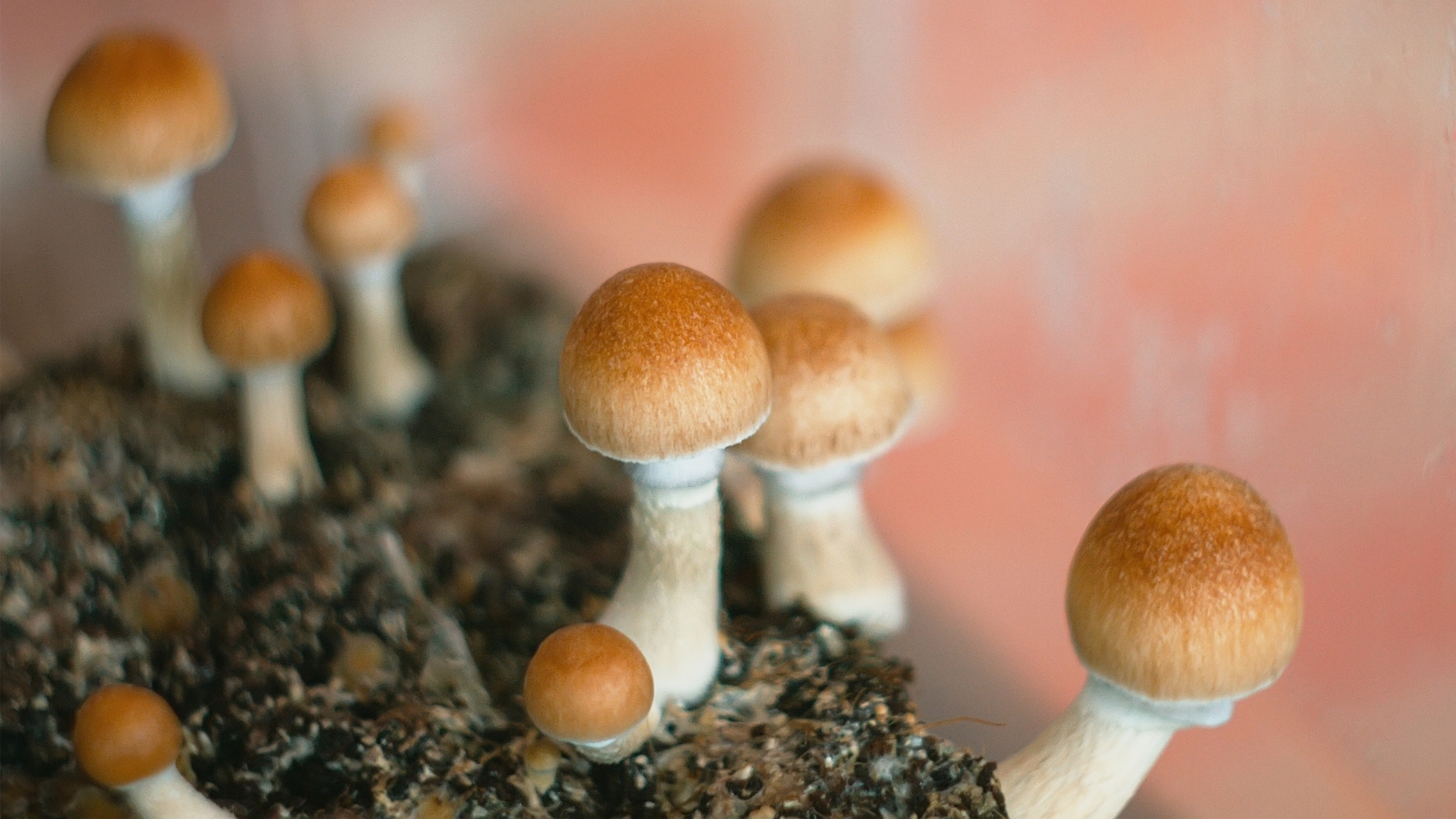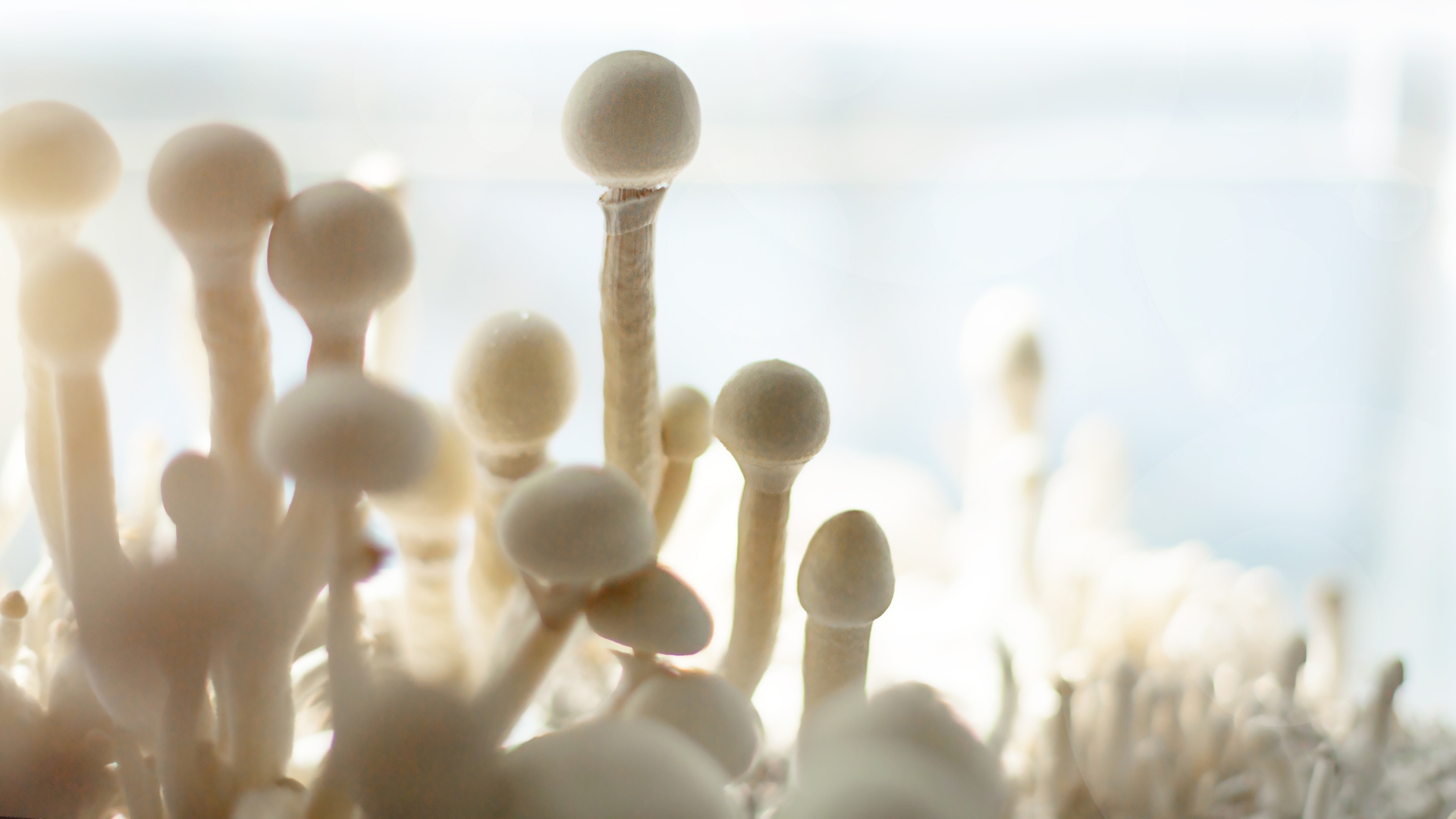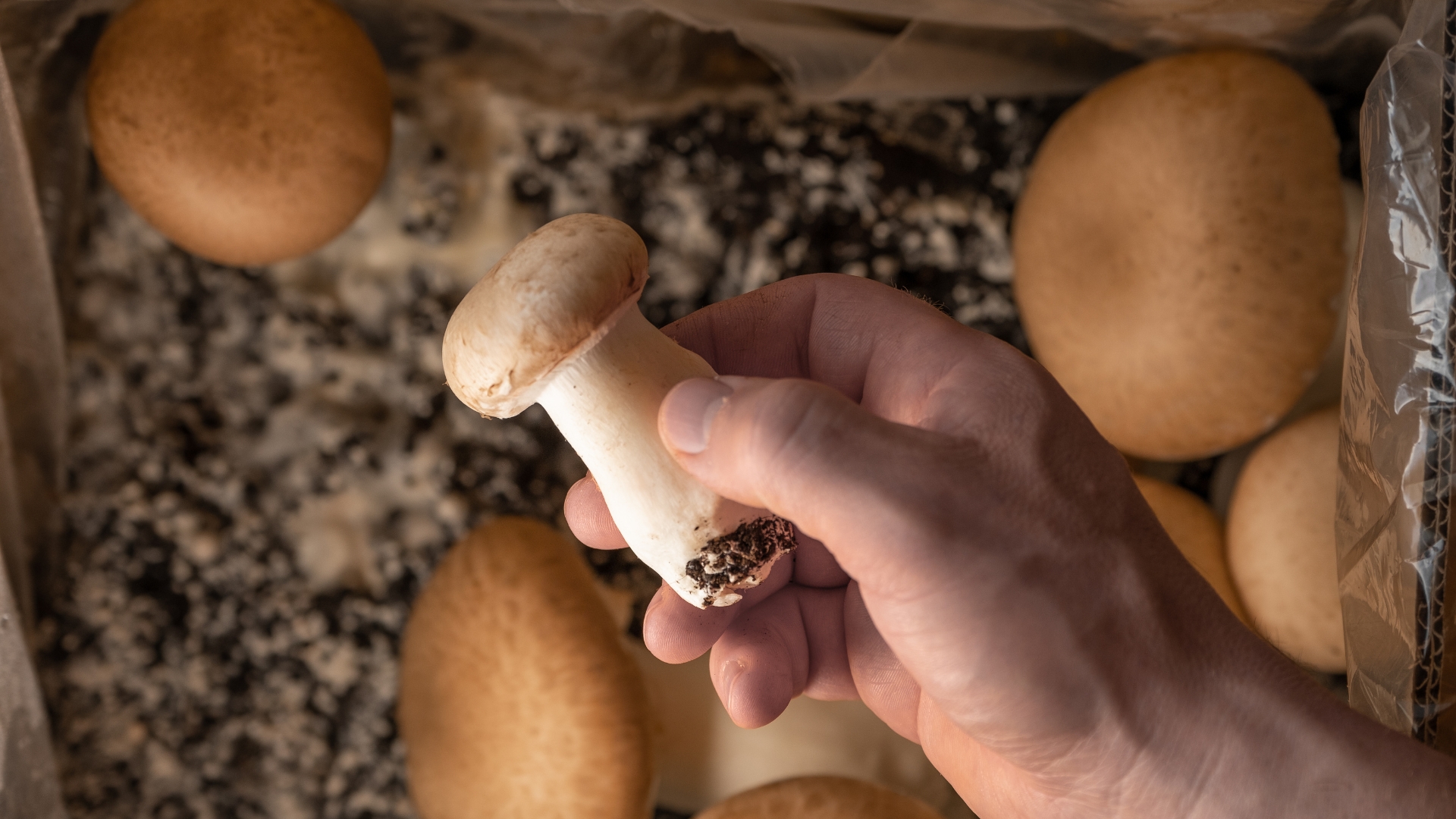One of the greatest things about growing mushrooms is the versatility of mushroom substrate. Compared to other edible foods, mushrooms have plenty of options for suitable growing environments. Fruits and vegetables might thrive in varying types of soil, but you certainly can’t plant them on the side of a log or inside a bed of sterilized grain. Yet, mushrooms love these types of things. If you are interested in growing mushrooms at home, selecting your mushroom substrate is one of the first things you must do. So, which is the best, and why does sterility matter?
Where Do Mushrooms Grow?
If you enjoy taking a stroll through wooded areas, you’ve probably stumbled upon a multitude of mushroom species. From cute and cartoon-like to alien and fuzzy, mushrooms are a sight to behold. They are complex and unique, and their existence pre-dates anything on this planet. They are not plants and have no chlorophyll. Instead, they get their nutrients from decaying organic matter and compost.
Mushrooms naturally grow in the forest and love damp logs in dark areas. They also grow in manure (usually cow dung) or in thick beds of rotting leaves. They love living underneath trees where they can get their needed nutrients underground from a deep mycelium network.
Of course, not all mushrooms come from the forest! You can easily grow magic mushrooms indoors and other edible types at home. In that case, a bit of learning beforehand can save you a ton of time and money.

How Do Mushrooms Reproduce?
While most living things use seeds to reproduce, mushrooms reproduce with the help of spores. Mushroom spores form underneath the caps of mushrooms in the web-like structure called gills. The spores fall from underneath the caps and are carried by wind or water. When the conditions are right, the spores will inoculate a new area, and mushrooms will begin to grow.
Mushrooms Spores
Mushroom spores are the reproductive organs of this fantastic fungi. Once they fall from the cap, spores must find their perfect spore match to reproduce. This is basically mushroom sex, and without a good pairing, the spores will be unsuccessful. You can harvest mushroom spores and use them with your mushroom substrate when growing at home.
Liquid Culture
Liquid mushroom culture is a ready-to-use solution containing mycelium that has already been germinated with mushroom spores. It typically comes in a syringe; all you need to do is inject it into your mushroom substrate. Because the culture already contains active mycelium, the chances of a successful harvest increase. You don’t have to hope that the spores find their perfect match. It also has a faster germination time than mushroom spores on their own.

Mushroom Grow Cycles
There are a few phases of the mushroom life cycle, and two of the most fun are spawning and fruiting. Not that all of the mushroom cultivation isn’t enjoyable, but spawning and fruiting are visible to the eye, so you get the satisfaction of seeing your new little mushroom crop develop.
Spawning Stage
Spawning is the first stage of a mushroom’s life cycle—it begins when fungal spores form mycelium. The process of spawning resembles the mating behavior of fungi in that it involves delicate dance steps executed by single-celled organisms.
Cells are male or female, and form groups called hyphae. Hyphae is the name for bands of similar spores; as these band together, they begin to create mycelium (a mass of interwoven threads).
Mycelium is a network of thin, threadlike cells that grow underground. Mycelial mats form the largest organisms on Earth: they live beneath the ground in forests and other areas with little light. These can be compared to trees’ roots because they anchor fungi to environments where it’s possible for them to absorb nutrients from organic matter.
Fruiting Stage
The next growth cycle phase is marked by the formation of thick knots of hyphae. This only happens when the environment is just right, and if there are enough nutrients available in the substrate for continued growth, pinheads may then emerge on top or within these mycelia.
This is the first sign that a new mushroom has begun to grow. The fungus will then mature and look like an adult version of its younger self, but each strain takes varying amounts of time to reach full maturity.

Growing Mediums for Mushrooms
We know that mushrooms growing in the wild prefer the dense forest floor, logs, manure, and other rotting or decaying plant matter. But what mushroom substrate should you use when cultivating at home? There are plenty of things to consider, especially the proper mix of materials. While coffee grounds make for a good substrate, they shouldn’t be used on their own.
Mushroom Substrates
A good mushroom substrate needs to have the right balance of nitrogen, calcium, magnesium, phosphorus, and sulfur. It should be slightly acidic (roughly 5-6.5 pH), and the optimal moisture content ranges from 50 to 70 percent. In addition, there has to be ample airflow to nurture development while eliminating the risk of contamination. What are some of the most common substrates?
Coffee Grounds
The coffee brewing process sterilizes the grounds and allows you to start growing in them immediately, which is a time-saving benefit of using grounds. Coffee grounds make a great substrate for growing mushrooms. For the best results, mix together one kilogram of coffee grounds with 100 grams of mushroom spawn and 20% straw.
Straw
Straw is an inexpensive and effective substrate for growing mushrooms. It can be purchased at farm stores, or anywhere you can find animal feed or bedding. Or, try experimenting with other agricultural wastes like corn stalks to see if they will also work well for this purpose.
You can grow mushrooms on straw alone or add supplements for additional nutrients. There are several ways to prepare the straw substrate for mushroom cultivation. One way involves using chemicals, such as peroxide or calcium hydroxide; another relies upon the fermentation of the straw for a week or more.
Grain
Many first-time mushroom growers start with a grain-based substrate. Rye is quite popular, and mushrooms seem to thrive in a rye environment. However, you can experiment with wheat, popcorn, rice, oats, and even bird seed. Still, rye is very absorbent, which makes it easy to work with. However, it is a multi-step process requiring an autoclave or pressure cooker for sterilization.
Hardwood Pellets | Sawdust
Many people love a wood option. Hardwood pellets are commonly used in pellet stoves and are fairly affordable as a mushroom substrate. Beech, maple, and oak are excellent options. All you need is pellets and water to mix the substrate, and you can skip sterilization because pellets are pre-sterilized.
Pellets are made from sawdust; you can also use straight sawdust in a mixed substrate formula. However, pellets and sawdust often require additional nutrients to provide a thriving environment for fruiting mushrooms.
Logs
If you have the space outdoors, you can also use a log! A variety of hardwood trees can be used for mushroom cultivation, including beech, poplar, maple, and oak. You should not use wood that has been dead or rotting away for a long time. Fungi may have already begun to colonize it, making it harder for your desired mycelium (mushroom spores) to grow in their new home.
Coco Coir
Coco coir, or coconut fiber, is made by grinding and pressing together the shells and husks of coconuts. It’s widely available from garden supply stores. Vermiculite—also known as perlite when used for horticultural purposes—is another commonly sold product that can retain lots of water but feels light enough to breathe through other mediums.
Coco coir goes hand in hand with vermiculite as a mushroom substrate. Remember that coco coir expands exponentially, so use caution when weighing how much you need.
Manure
doesn’t naturally sound like something you’d want to grow an edible product in, and for some of us, it’s downright repulsive. But for some mushrooms, manure is a home sweet home. Some mushrooms even require this substrate to form fruiting bodies.
Cow, chicken, and horse dung are among the most popular types of manure. Most recipes require a two-to-one ratio of manure to coco coir. Then, water is added to obtain proper moisture levels. However, getting the moisture right is a delicate dance. No water should pool, and when squeezing the substrate, it should feel firm (not soggy).
And, before use, this mushroom substrate absolutely needs to be sterilized before inoculation.
Does Mushroom Substrate Have to Be Sterile?
Yes! A sterile mushroom substrate is incredibly important. A non-sterile environment is a breeding ground for bacteria, mold, or other microorganisms that can ruin your harvest. In addition, if it is not sterilized or pasteurized, then competing fungus may knock out your mushroom colony.

Select the Best Mushroom Growing Substrate Kit
Mixing up your own substrate isn’t terribly difficult, but why bother when there are plenty of affordable options ready to go? So many mushroom grow kits arrive ready to go. All you need is some spores or liquid culture. We tried out several of the best mushroom grow kits on the market and created the ultimate guide to help you on your mycological adventures. Simply set these kits up, inoculate the substrate, and wait for the magic to happen. Soon, you’ll have a magic mushroom harvest all your own.
Have you ever grown your own mushrooms? Drop us a note in the comments and let us know what kind of substrate worked best for you.















